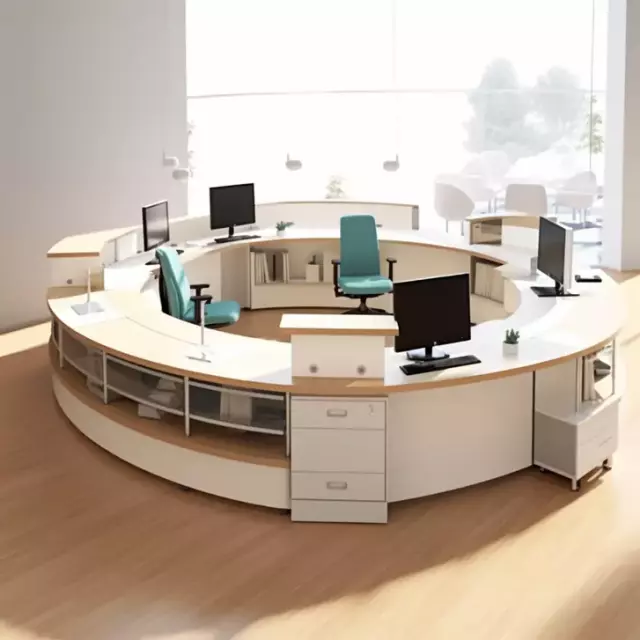Views: 0 Author: Site Editor Publish Time: 2024-04-26 Origin: Site








In the dynamic environment of healthcare facilities, nurse stations serve as pivotal hubs where critical patient care decisions are made. These centers of activity demand meticulous planning and customization to address the distinct requirements of both healthcare teams and patients. This article delves into the significance of customizing nurse stations and offers insights into how healthcare facilities can personalize these vital spaces to align with their specific needs.
Why Customizing Nurse Stations Matters:
1. Optimized Workflow:
By customizing nurse stations, healthcare facilities can create layouts that facilitate efficient workflow patterns. Strategically positioning workstations, storage units, and communication tools allows nurses to minimize unnecessary movements and streamline their tasks, ultimately boosting productivity and patient care quality.
2. Enhanced Communication:
Nurse stations serve as vital communication hubs where healthcare professionals collaborate and exchange crucial information. By incorporating features such as integrated communication systems, whiteboards, and digital displays, these spaces can be tailored to foster seamless communication, enabling the swift dissemination of vital patient data and updates among the care team.
3. Improved Ergonomics:
It is of the utmost importance to address the ergonomic needs of nurses and other healthcare staff when customizing nurse stations. Adjustable desks, ergonomic seating, and adequate lighting can mitigate physical strain and fatigue, fostering comfort and well-being during extended shifts.
4. Tailored Storage Solutions:
The specific storage requirements of healthcare facilities vary considerably, depending on factors such as size, patient demographics, and specialty areas. Customizing nurse stations allows for the implementation of tailored storage solutions, ensuring convenient access to essential supplies, medications, and equipment while maintaining workspace organization and cleanliness.
5. Patient-Centered Design:
Nurse stations are essential to patient care delivery, serving as primary points of contact between healthcare providers and patients. Customizing these spaces with patient-friendly features such as welcoming design elements, privacy screens, and comfortable seating areas fosters a more inviting and supportive environment for patients and their families, enhancing the patient experience.
Modern Nurse Station Design Share From Hongye Furniture
The circular shape allows for a more collaborative atmosphere among staff, promoting better communication and teamwork.
It's smooth curves and clean line also provide a modern and sleek look, enhancing the overall aesthetic of any hospital or medical facility.

Frequently Asked Questions:
Q1: Can nurse stations be customized to accommodate different healthcare specialties?
A1: Yes, nurse stations can indeed be customized to meet the unique needs of various healthcare specialties. For instance, pediatric nurse stations may incorporate child-friendly design elements, while critical care units may require additional space for monitoring equipment.
Q2: How can technology be integrated into customized nurse stations?
A2: Technology integration constitutes a critical aspect of customizing nurse stations. This may involve integrating electronic health record systems, telemedicine capabilities, and nurse call systems to enhance communication and operational efficiency.
Q3: What considerations should be made when designing ergonomic nurse stations?
A3: When designing ergonomic nurse stations, careful attention should be paid to factors such as desk height, chair ergonomics, and monitor placement to promote comfort and mitigate the risk of musculoskeletal injuries among healthcare staff.
Q4: Are there regulations or guidelines governing the design of nurse stations?
A4: While no specific regulations govern nurse station design, healthcare facilities should adhere to general guidelines concerning infection control, accessibility, and patient privacy when customizing these spaces.
Conclusion:
The customization of nurse stations is a crucial step in optimizing workflow efficiency, enhancing communication, and fostering staff and patient well-being within healthcare facilities. By tailoring these spaces to suit their unique requirements, healthcare organizations can cultivate functional, ergonomic, and patient-centered environments that facilitate the delivery of high-quality care.